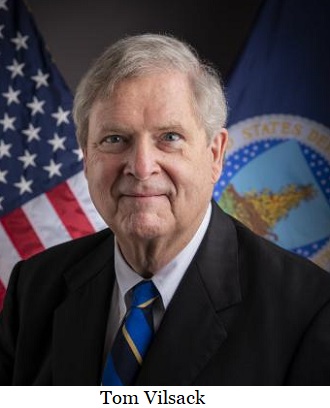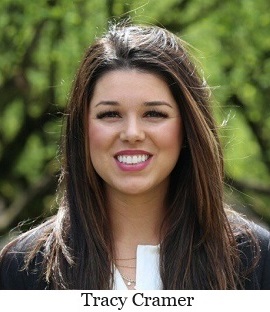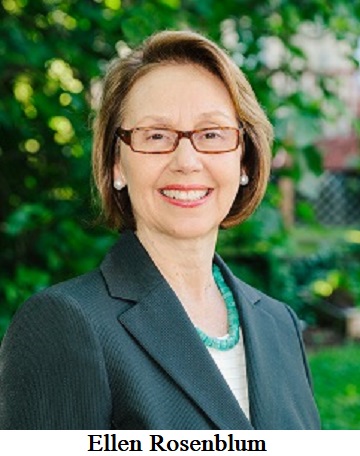
On this day, August 22, 2002, President George W. Bush proposed to end the government's "hands-off" policy in national forests and ease logging restrictions in fire-prone areas.
Also on this day, August 22, 2014, the State of Oregon filed a $200 million suit against Oracle Corp. and several executives over the company's role in creating the troubled website for the state's online health insurance exchange.
Also on this day, August 22, 2020, demonstrators faced off in Portland with the two sides -- one aligned with a "Back the Blue" rally and the other a Black Lives Matter counter-demonstration -- reportedly largely ignoring police warnings. Ultimately, Department of Homeland Security officers deemed the gatherings unlawful and moved through the plaza, forcing the crowd to disperse.
 Post an Event
Post an Event
| Benton County Republicans’ Private Fundraising Event, “Bent-on Boots and Bling” with Trey Taylor |
| Friday, September 5, 2025 at 5:00 pm |
| Featuring Trey Taylor
Music Private Event
Friday, September 5, 2025 5:00-5:30 pm VIP Reception
5:30-8:00 pm Heavy Appetizers,
Auction, Concert
Red: $750 VIP Reception
Front Row Table Sponsor
White: $500 Table Sponsor
Blue: $50 per person
Limited Seating. Get Yours Now!!!
Support Local
Dress up: Bling, Cowboy, Patriotic Benton County Republican
FUNDRAISER
www.BentonGOP.org
Get your tickets today at:
https://www.bentongop.org/event-details/benton-county-republicans-fundraiser/form
About Trey:
Trey is the youngest African American Man in Country Music History. The Denver Post wrote
"It's impossible to miss his enthusiasm. With a fondness for cowboy boots, gaudy colors and dazzling jewelry, Trey Taylor could stand toe to toe with any of the Pop, Country or even Rap
contemporaries of his generation.“ |
| Trysting Tree Golf Club, 34028 NE Electric Rd., Corvallis |
More than $1 billion to be spent through the federal program
The U.S. Department of Agriculture
has now announced the USDA Forest Service is to spend more than $1 billion in nearly 400 grant awards nationwide. They say that is intended to to increase access to trees and the social, health, and economic benefits they provide.
Of the total funding, the Forest Service awarded over $94 million to community-based organizations, tribes, municipal and state governments, non-profit partners, universities, and other eligible entities across the Pacific Northwest Region. The US Forest Service says that these investments will plant and maintain trees in disadvantaged urban communities, tackle the climate crisis, and support jobs and workforce development.
The funding, through President Biden's controversial
Inflation Reduction Act, is part of a $1.5 billion investment in the Forest Service's Urban and Community Forestry Program. The US Forest Service insists that this funding supports local communities and the organizations that serve them as they work to increase tree cover in disadvantaged spaces and boost equitable access to nature.
"These investments arrive as cities across the country experience record-breaking heatwaves that have grave impacts on public health, energy consumption, and overall well-being," said
Secretary of Agriculture Tom Vilsack. "Thanks to President Biden’s Investing in America agenda, we are supporting communities in becoming more resilient to climate change and combatting extreme heat with the cooling effects of increased urban tree canopy, while also supporting employment opportunities and professional training that will strengthen local economies."
Projects in Oregon:
- Urban and Community Forest Health and Biodiversity for Long-term Resilience -City of Hermiston -$1,000,000
- Riparian Forest Rescue! Save our unique urban forest from the invasive ash borer -City of Hillsboro -$340,835
- Pendleton Urban Forestry Program -City of Pendleton Parks & Recreation -$2,000,000
- Building a More Resilient and Equitable Tree Canopy in Salem, Oregon -City of Salem -$1,000,000
- Portland/Vancouver Canopy Collective -ELSO Inc -$7,000,000
- Engaging low-canopy neighborhoods in community tree planting -Friends of Trees -$12,000,000
- Northwest Youth Corps NW Community Forestry Project -Northwest Youth Corps -$12,000,000
- Growing Equity in Oregon's Urban and Community Forests: Investing in Disadvantaged Communities -Oregon Department of Forestry
-$22,857,196
Total spending in Oregon: $58,198,031
"These investments will not only contribute to the planting and maintenance of trees in disadvantaged urban communities, but they also assist with tackling the climate crisis and supporting jobs and workforce development,” said Chad Davis, Regional Director for State, Private and Tribal Forestry for the Forest Service’s Pacific Northwest and Alaska Regions. “This funding will help create more vibrant and healthy urban communities across the Pacific Northwest and the entire country.”
A D V E R T I S E M E N T

A D V E R T I S E M E N T
The Urban and Community Forestry Program supports the
Justice40 Initiative, which intends to ensure that 40% of the overall benefits of certain Federal investments flow to disadvantaged communities that are marginalized, underserved, and lack access to trees and nature.
The US Forest Service says that all grant funding will flow to disadvantaged communities thanks to the applicant tool, which used the White House Climate and Economic Justice Screening Tool (CEJST) to identify eligible communities. CEJST is a geospatial mapping tool that identifies communities faced with significant burdens, such as climate change, energy, health, housing, legacy pollution, transportation, water and wastewater, and workforce development.
The Forest Service says it supports vibrant and healthy urban communities through supporting healthy urban forests. More information about the funded proposals, as well as announcements about the grant program, is available on the
Forest Service Urban and Community Forestry Program website.
--Ben Fisher| Post Date: 2023-09-24 11:58:26 | Last Update: 2023-09-25 11:41:47 |
“Voting on the stipends creates an actual conflict of interest...”
The Oregon Government Ethics Commission has now issued its opinion on school board stipends and it has apparently prompted some complicated philosophical issues for school board members serving in the state of Oregon.
Representative Ben Bowman, a Democrat and a former Tigard-Tualatin School Board member, sponsored a bill in the 2023 Legislature to allow compensation for school board members. Bowman said the time demands of school board service are preventing some community members from volunteering. He said the new law’s goal is intended to lessen the financial barriers and draw a more diverse pool of potential board members.
House Bill 2753 was passed into law on July 18th and removed the Oregon prohibition on school board compensation and allowed school board members to award themselves a stipend of up to $500 a month that would grow with inflation. Bowman apparently worked closely with OSBA to amend the bill to address the prohibition as well as a rule against paid district employees serving on their school board, but they are still problems with the new law.
According to Article II, Section 10 of the Oregon constitution, individuals are prohibited from holding more than one "lucrative" office at a time. As one example, this means that you can't be a legislator and a school board member.
HB 2753 allows a stipend as part of a school board member’s compensation package, but it does not address the conflict of interest disclosure requirements. Voting on a pay package is an “actual” conflict of interest according to Oregon statute, the commission opinion says, and thus school board members can’t participate in a vote on their own stipends.
A D V E R T I S E M E N T

A D V E R T I S E M E N T
The commission proposed some workarounds, but OSBA leadership said they appear unworkable.
“We don’t see these suggested solutions as practicable,” OSBA Executive Director Jim Green said. “Instead, we will be working on a legislative solution in the short 2024 session. In the meantime, we are strongly urging that school boards hold off on considering the stipend issue.”
OSBA says they now encourage school boards to delay any votes on stipends, however the law, allowing school board members to receive a stipend up to $500 a month, went into effect July 18 and some school boards have already taken votes either accepting a stipend or saying no to it..
School boards that passed a stipend without using one of these methods may be violating Oregon statute and open to an ethics complaint investigation, the commission said. OSBA Policy Services Director Spencer Lewis plans to meet with commission staff to clarify the details and options. OSBA will issue guidance to help school board members sort it out, Lewis said.
Lewis recommended that boards that have already voted on stipends contact legal counsel or OSBA to consider their options. The ethics commission typically does not advise on past actions and contacting them could open an investigation, Lewis said.
OSBA Executive Director Jim Green said OSBA will talk with Bowman about a possible legislative fix.
--Ben Fisher| Post Date: 2023-09-23 11:41:28 | Last Update: 2023-09-23 13:57:02 |
Five out of seven position on the ballot in 2024
The past two years has brought a makeover of new faces to the Oregon Supreme Court. As of the 2020 election, all seven justices on the Oregon Supreme Court have been appointed by Democratic governors. The Oregon Constitution establishes nonpartisan election as the mode of selection for state court justices. In the event of vacancies, justices are appointed by the governor until the next general election.
Nonpartisan candidates in a contested primary win outright if they receive over 50 percent of the vote in the primary. Justices of the Supreme Court serve six-year terms upon election, with two positions expiring each general election. Resignations have added three positions to the ballot joining the two expiring seats.
The two expiring positions are
Rebecca A. Duncan and
Meagan A. Flynn. Summaries of these justices are only a representation of their experiences and contributions.
Judge Duncan was appointed by Governor Kate Brown in 2017. Prior to joining the Supreme Court, Justice Duncan served on the Oregon Court of Appeals from 2010 to 2017, including as Presiding Judge of Department Three from 2014-2017. She frequently presents at continuing legal education programs on topics including appeals, constitutional law, criminal law, evidence, and family law. Justice Duncan lives in Salem with her family, and she volunteers with Backpack Buddies, a hunger relief program for elementary school children, and Oregon Battle of the Books, a literacy program.
Judge Flynn serves as Chief Justice, elected by her colleagues. She was initially appointed to the Supreme Court by Governor Kate Brown in April 2017, Before her appointment, she served on the Oregon Court of Appeals since November 2014. Her current extracurricular activities include serving as a member of the board of the Classroom Law Project and as a coach for the We the People team at Franklin High School in Portland and as a regular speaker on issues of professionalism for the Oregon Bench & Bar Commission on Professionalism.
Governor Tina Kotek appointed
Stephen K. Bushong and
Bronson D. James in January 2023, and
Aruna A. Masih in September 2023. These positions will be voted on at the first general election - November 2024.
Justice Bushong was a Circuit Court Judge in Multnomah County from 2008 through 2022, including six years as Chief Civil Judge and four years as Presiding Judge. Justice Bushong serves on the Oregon Law Commission and has served on the Uniform Trial Court Rules Committee, the Oregon State Bar’s Uniform Civil Jury Instruction committee, and the executive committees of the OSB’s Litigation and Government Law sections. He authored chapters in the OSB publications on Civil Pleading and Practice (2012) and Oregon Constitutional Law (2022), and regularly submits articles on “Recent Significant Oregon Cases” featured in the OSB’s Litigation Journal.
Justice James operated his own law firm for six years, focusing on federal and state criminal defense, federal immigration representation, and civil rights litigation. He began his judicial career on the trial bench, at the Multnomah County Circuit Court. In 2017 he was appointed to the Oregon Court of Appeals. He currently chairs the Oregon Supreme Court Council on Inclusion and Fairness, sits on Oregon’s Justice Reinvestment Initiative Grant Review Committee, and is an adjunct professor at both Willamette University College of Law and Lewis and Clark Law School, where he teaches evidence. He volunteers with Classroom Law Project as a high school mock trial coach. Justice James is a frequent presenter on issues of digital privacy, search and seizure, and constitutional law.
A D V E R T I S E M E N T

A D V E R T I S E M E N T
Justice Masih is the only Supreme Court appointee without prior justice experience. She worked for over 25 years in a variety of areas of civil law, including civil rights, employment, labor, professional licensure, contract, pension, elections, and constitutional law. She was a partner in the law firm of Bennett Hartman, LLP and served as an associate in the law firm of McKanna Bishop Joffe, LLP. Her work included appearances in state and federal courts, and before the legislature and administrative agencies. Masih serves on the Board of Directors of the Oregon Women Lawyers Foundation and is the founding member of the South Asian Bar Association of Oregon. She also coaches the McDaniel High School Constitution Team, and previously chaired the Oregon State Bar’s Labor and Employment Section and Advisory Committee for Diversity and Inclusion and received the Multnomah Bar Association’s inaugural Diversity Award in 2017.
Voters often have no choice in electing judges because they're routinely appointed by the governor and then run for election uncontested. Generally speaking, incumbents are reelected in Oregon. Many believe it is a contributing factor to when judges resign or retire deliberately creating the opportunity for a Governor appointee.
It’s really important that voters recognize how significant it is when there is a competitive race. A county judge can have a significant effect on individual cases, and an appellate court judge can have a significant effect on the law for years to come. Judges have some of the longest terms of any of the elected offices in the state. So it’s important voters do something more than just trusting your gut, or voting for the most appealing name. Voters can find candidate information at
Oregon Abigail Adams Voter Project.
--Donna Bleiler| Post Date: 2023-09-22 12:30:23 | Last Update: 2023-09-22 17:01:46 |
Housing Production Advisory Council report is not promising
In a reverse turn of events, Governor Tina Kotek finds her agenda on the wrong side of her party. The Governor requested
HB 3414, requiring local governments to approve certain adjustments to land use regulations for housing development within urban growth boundary. The bill was like a hot potatoe bouncing from committee to committee in the House ending up in Ways and Means where it was appropriated $10 million towards the $16.3 million needed, going straight through a work session forgoing a public hearing, then passing the House floor. In their rush, the Senate neglected to hold a public hearing and went straight to the floor where it failed.
In anticipation of a cooperative legislature, Governor Kotek issued
Executive Order 23-04 on January 10, 2023, which outlined her plans to increase housing and established the Governor’s Housing Production Advisory Council. The Council was instructed to provide a
framework April 1 from findings for policy changes and investments to meet the governor’s targets. Final report is due no later than December 31, 2023.
Considering the setback from
HB 3414 failure, the Council identified many barriers that would lead to Oregon building fewer homes than needed to keep pace with growth, leading to higher rent and mortgage costs and more homelessness. They recommended cities expand their growth boundary once every ten years without going through the expansion process. Even if the Governor found a way to by-pass the legislature, the Council reported there aren’t enough construction workers to build the needed homes, cumbersome permit requirements make projects take longer and cost more and the state doesn’t have enough land ready for homebuilding.
Senator Findley and Representative Owen co-sponsored
SB 70, which passed allowing Eastern Oregon Border Economic Development Region to modify requirements for residential rezoning of lands.
A D V E R T I S E M E N T

A D V E R T I S E M E N T
Bend seems to have found enough land using the 2021 law that allowed Bend to take in a 260-acre expansion as a model for statewide policies.

"Housing supply, not land supply, is at the crux of Metro’s housing crisis," said Metro's Legislative Affairs Manager Anneliese Koehler in testimony before the House Committee on Rules last summer.
There seems to be a cross-over between homeless and affordable housing that some see as the Governor flipping back and forth to manipulate her agenda.
The Council continues to meet twice-a-month by virtual webinar. Next meeting is September 29, 2023, at 1:30pm. Interested persons can register for
upcoming meetings or view recordings.
--Donna Bleiler| Post Date: 2023-09-21 12:05:59 | Last Update: 2023-09-21 02:21:38 |
Serious control weaknesses found with programs receiving federal funds
State auditors found millions of dollars in questioned costs and serious control weaknesses at a number of programs receiving federal funds, according to a
report released by the Oregon Secretary of State's Audits Division.
Every year, the division conducts two major financial audits: the 285 page
Annual Comprehensive Financial Report and
Statewide Single Audit. Auditors also draft and release a report summarizing both of these audits. The summary report for fiscal year 2022, called
Keeping Oregon Accountable, has now been released.
The federal government requires audits of the state’s financial statements and compliance with federal program requirements for Oregon to continue receiving federal assistance. In the past, this funding has usually ranged from $11 to $12 billion each year. Since the pandemic, federal funding has ballooned — in fiscal year 2022, Oregon received $21 billion in federal aid.
“Our financial audits are a critical part of keeping Oregon government accountable to its people,” said Audits Director Kip Memmott. “This year’s statewide audits found some significant issues that we think are important to bring to the attention of Oregonians, the Governor, and the Legislature.”
A D V E R T I S E M E N T

A D V E R T I S E M E N T
According to the Secretary of State's office, the audits are noteworthy for two reasons: more questioned costs, and far more modified opinions.
Questioned costs has a very specific meaning for auditors. It’s a term required by the federal Office of Management and Budget; when auditors question costs, they are referring to program costs that may or may not be allowed to be paid with federal funds.
“It serves as a flag for federal funding agencies to review the findings and then decide whether the costs are allowable,” said Tracey Gates, a principal auditor with the division.
In fiscal year 2021, auditors identified $10 million in questioned costs. For fiscal year 2022, questioned costs increased by more than $20 million, totaling $35.2 million at 10 programs in five agencies. Of that amount, $9.1 million were directly identifiable costs, while the remainder were likely errors, based on sample testing.

And then there are the modified opinions, several of which were issued in this year’s audits. “When an audit shows controls are sufficient and the program is generally in compliance with federal requirements, we issue what’s called an unmodified, or clean, opinion,” Gates said. “An unmodified opinion is a good thing. But if we have concerns about the quality of internal controls, we have to issue modified opinions.”
An adverse opinion was issued for the Emergency Rental Assistance Program at Oregon Housing and Community Services under the direction of Andrea Bell, meaning control weaknesses were pervasive enough that the controls would not prevent, or even detect, significant noncompliance.
Additionally, a disclaimer of opinion was issued for the Emergency Solutions Grant Program, also at OHCS. A disclaimer of opinion means there was not sufficient, appropriate evidence for auditors to even issue an opinion on program compliance.

Qualified opinions are less severe but indicate that internal controls are still inadequate to prevent or detect significant noncompliance. Auditors issued qualified opinions for five programs at three agencies: OHCS, DHS, and the Oregon Health Authority. Two of these programs -- Temporary Assistance for Needy Families, and the Low-Income Home Energy Assistance program -- have been issued qualified opinions for several years now.
What will happen as a result of these opinions?
“It’s up to the federal granting agencies,” Gates said. “They are responsible for following up on our findings and only they have the authority to enforce grant requirements. This could include sanctions or a change in future funding, but it could also result in a clarifying change to the requirements.”
--Staff Reports| Post Date: 2023-09-20 11:57:55 | Last Update: 2023-09-20 15:45:07 |
Secures Shutter Creek for research headquaters
The Oregon Department of State Lands (DSL) and Oregon State University are working collaboratively to transform the
Elliott State Forest into a publicly owned state research forest. The Elliott State Research Forest is poised to be the nation’s largest research forest at 91,000 acres – a place where scientists and managers work with Tribal partners to explore forestry’s role in addressing climate change impacts, restoring habitat and endangered species, and advancing responsible active management including timber and other forest products.
The State Land Board's vision for the Elliott is a public forest that has completed its obligation to funding schools, but will continue to contribute to conservation, recreation, education, local economies, and more as a research forest.
The Oregon Legislature in 2022 passed
SB 1546, which established an independent public agency to oversee the forest, decoupling the forest from Oregon’s Common School Fund and prospectively appointing the first board of directors for the Elliott State Research Forest Authority, the new public agency that will be established in 2024 to oversee the research forest in collaboration with OSU.
The agency sets expectations for public accountability and transparency, and locks in the Elliott’s ongoing contributions to conservation, economic growth, recreation, education, and forest research.
SB 161 passed in 2023 to updated the deadlines to 2024.
OSU continues to refine its draft of the Elliott State Research Forest Management Plan based on input from the Elliott State Research Forest Authority prospective board, government-to-government relationships with local Tribes, public input, and updates to the Habitat Conservation Plan.
The public can join an upcoming virtual listening session on September 21 from 6pm tp 7:30pm, to hear updates on the forest management planning process and learn more about the research design, followed by a forum to share input. Zoom links to join the listening sessions and more information about the forest management planning process can be found on the
OSU College of Forestry website. September 22 the prospective board will hold a zoom meeting, 10am to 3pm, and meeting materials can be
found here.
The prospective boards are completing final steps to create the research forest, including submission of a habitat conservation plan (HCP) to federal agencies, approval of a forest management plan, and approval of participation by OSU’s Board of Trustees. The U.S. Fish and Wildlife Service recently concluded a public comment period on the draft environmental impact statement for the draft Elliott State Research Forest HCP. The plan balances forest research and management activities with the conservation of rare species and their habitat in the Elliott State Forest.
The purpose of an HCP is to establish clear boundaries for management and harvest on the forest in compliance with the National Environmental Policy Act and to ensure conservation of at-risk species such as salmon, spotted owls, and marbled murrelet.
A D V E R T I S E M E N T

A D V E R T I S E M E N T
Operation headquarters for the Elliot State Research Forest will be based at the former site of Shutter Creek Correctional Institution. The 49-acre proposed headquarters site will include laboratory, classroom, dormitory and office spaces and may also house potential
partnerships with local and Tribal entities.
“The Elliott is about to begin a new chapter as a world-class research forest, which created this opportunity for Shutter Creek to have a new beginning as well,” said DSL Director Vicki L. Walker. “I’m excited Shutter Creek will continue to contribute to the local area and economy through its connection to the nation’s largest research forest, right here on Oregon’s South Coast.”
Senator Jeff Merkley and Senator Ron Wyden secured $4 million for site renovations and rehabilitation in Congress’s fiscal year 2023 omnibus appropriations package. The site is a former federal property previously deeded to Oregon Department of Corrections by the U.S. General Services Administration at no cost for correctional uses through the federal Public Benefits Conveyance Program (PCB). The State identified another qualifying PCB use for the property requesting a PCB program change of use from corrections to wildlife conservation.
Shutter Creek is within the traditional lands of the hanis (Coos) people. The Elliott State Research Forest is within the traditional lands of the hanis (Coos) and quuiich (Lower Umpqua) peoples. Descendants of the hanis and quuiich peoples are enrolled in the federally recognized sovereign nations of the Confederated Tribes of Coos, Lower Umpqua, and Siuslaw Indians and Confederated Tribes of Siletz Indians.
Walker noted there is also potential for additional future partnerships on the site recognizing the history and future opportunity associated with this site.
--Donna Bleiler| Post Date: 2023-09-20 03:00:21 | Last Update: 2023-09-20 01:33:23 |
“We see a dramatic decline in academic achievement”
State Representative Tracy Cramer (R-Gervais) is calling on the State Board of Education to remove consideration of suspending the Essential Skills Learning requirement for another four years. In a
letter to the Board, Cramer outlined concerns about public input, lack of accountability, and using the consent calendar to rush through such a controversial policy.
Item 3A on the Board’s September 21, 2023 agenda fast-tracks the suspension of the Essential Learning Skills assessments through the 2027-2028 school year. These assessments measure students’ ability to read, write, and do math before graduation.
“At the same time we see graduation rates inching up, we see a dramatic decline in academic achievement,” Representative Cramer said. “Our schools should be educating our kids, not just credentialing them without setting them up for future success. What good is a diploma if you can’t read at grade level? Repealing graduation standards was a disservice to students in 2021, and it still is today. Parents are already pulling their kid public schools at a record pace, and these kinds of back-room decisions continue to erode their trust.”
A D V E R T I S E M E N T

A D V E R T I S E M E N T
In 2021,
SB 744 suspended the Essential Skills Learning Requirement through the end of this school year. It also gave the Oregon Board of Education the unilateral authority to suspend them in the future or even require them at all.
The State Board’s Policy Manual states that “items may be placed on the consent agenda upon the recommendation of the superintendent.” The Governor is the state’s Superintendent of Public Instruction.
The staff summary of item 3A acknowledges that the move to suspend graduation requirements for another four years “may also result in less student accessibility, public transparency, and comparability.”
--Staff Reports| Post Date: 2023-09-18 18:26:31 | Last Update: 2023-09-18 18:39:10 |
Public opportunity for comment
The Bureau of Ocean Energy Management (BOEM) is taking public comment on two BOEM wind energy projects the federal government wants to install off the coast of Southern Oregon on the outer continental shelf.
According to the Department of Energy, in order to capture the abundant wind resources available offshore, offshore turbines need to be one-and-a-half times the height of the Washington Monument, with blades the length of a football field.
Oregon uses over 48 million megawatt-hours (MWh) per year of electricity, which comes from a combination of hydroelectric (40%), coal (32%), natural gas (17%), land-based wind (7%), nuclear (3%), and other sources (1%). Oregon’s offshore wind farms are projected to produce 2.6 gigawatts (2,600 MWh) requiring 18 wind turbines and foundations, 6,800 miles of cable, and dozens of specialized vessels. For so little, how much will this cost in consumer electric bills, not to mention the maintenance and repairs?
It is not possible to have an accurate environmental risk assessment or estimated production output of these wind farms due to the lack of long-term studies on floating wind farms. There have only been a handful of 5-year studies using prototypes and some of those prototypes were disassembled and recycled after 5 years of use. All prototypes are estimated to have a life span of only 15 years.
A D V E R T I S E M E N T

A D V E R T I S E M E N T
The Pacific Ocean is the most powerful of all open oceans and the most destructive. When considering the breakdowns, failures, and fluid leaks that occur within the lifespan of a wind turbine, there is a high probability of environmental damage requiring high maintenance, and failures and leaks will be significant if there is a viable turbine able to withstand the Pacific Ocean for any period.
Some studies show wind turbines in the summer only produce 17% of what they produce in the winter. That means Oregon can only rely on 17% of the actual maximum output or be subject to rolling blackouts every summer.
Oregon offshore wind visual simulations are prepared for six key observation points that illustrate hypothetical wind projects using hypothetical model of a total of 262 20-MW turbines for a total generating capacity of approximately 5,240 MW of renewable energy. The 20MW turbines that are still in the conceptual stage and not commercially available. The simulations are designed to represent a commercially scaled, maximum density, and technically feasible scenario that is consistent with industry trends for operating capacity, wind turbine size, spacing and configuration.
BOEM used a comprehensive process to identify the potential offshore locations that appear most suitable for floating offshore wind energy leasing and potential development, taking into consideration possible impacts to local coastal and marine resources and ocean users.
This project is far reaching, 22% of Oregon’s food supply comes from the ocean. The fishing fleets, which are security for the state, have been sent to California to make room for these wind projects. Diane Rich of Oregon Natural Resource Industries (ONRI) discussed wind turbines on the Rob Taylor Show, says they are going to be assembled in California by Chinese technicians using materials from China. No part of this project benefits Oregon’s economy, and most of the energy escapes when capturing it from the turbines.
Rich asks, why would we spend money to enhance another country and pursue something that will fail? The east coast has had nothing but problem and wants them gone. The noise vibrating into the water has caused 60 dead whales and are killing the birds.
BOEM will
accept comments through 11:59 p.m. ET on October 16, 2023. Public meetings will be held in Gold Beach September 26, Coos Bay September 27, and Brookings September 28 from 4 pm to 8 pm.
Registration, location and maps. The meeting topics include:
- Next steps on the Oregon offshore wind planning process
- Oregon Draft Wind Energy Areas
- Spatial Modeling Process and Draft Report Results
- BOEM Visual Simulations Study and Results?
--Donna Bleiler| Post Date: 2023-09-18 15:49:23 | Last Update: 2023-09-18 18:11:45 |
Benner is the first civilian to serve as Public Information Manager
The Portland Oregon Police Bureau
has hired Mike Benner as its new Public Information Manager. PPB says that Benner has approximately 20 years of experience in communications, spending the last 15 years as a reporter at KGW-TV, often reporting on law enforcement-related matters across the metro area. Prior to joining KGW, the Indiana University graduate was a reporter at WGBA-TV in Green Bay, Wisconsin, and an anchor at WJFW-TV in Rhinelander, Wisconsin.
“We are pleased to welcome Mike to the Portland Police Bureau,” said Chief Chuck Lovell. “Our sworn Public Information Officers do incredible work in a challenging job, but they also eventually move to different assignments. My goal is to build consistency in our communications—which is so critical in maintaining transparency and trust within the community.”
Benner is the first civilian to serve as Public Information Manager at PPB.
He will oversee the Portland Police Bureau’s Strategic Communications Unit, which is responsible for informing the public of information that is critical to life safety, informs community members of public safety issues of concern, may involve the need for disclosure of activities at the Bureau, or may increase community trust and transparency. The unit provides information through multiple venues, including: news releases, press conferences, social media, interviews, website, podcasts and videos. The unit is also tasked with internal communications within PPB and collaborates with the Personnel Division’s recruiting team.
A D V E R T I S E M E N T

A D V E R T I S E M E N T
“I am beyond thrilled to be joining the Portland Police Bureau,” Benner said. “Providing accurate and timely information to the community, including matters involving public safety, is a task I do not take lightly. Our community relies on us to share critical public safety information and the important work being done by members of the PPB for the diverse communities we serve.”
In addition to Benner, the Strategic Communications Unit consists of a sworn Public Information Officer (PIO), a non-sworn PIO, two multi-media specialists and officers who work as PIOs on a detached basis. The unit also has an employee from the Bureau of Technology Services that provides web design, social media, and programming support.
More information about the Strategic Communications Unit is available on the
website.
--Ben Fisher| Post Date: 2023-09-18 14:55:31 | Last Update: 2023-09-18 15:08:40 |
Referendum 401 introduces the impeachment process in Oregon
Editors note: This is the third in a three-part series on legislative referendums scheduled for the November 2024 election
The 2023 Oregon Legislative Session was considered by many Oregonians to be a controversial session, involving a walkout by Republican legislators over highly partisan politics. The resulting laws from the session were amended after walkout negotiations upon the Republican Senate return, but still largely catered to the majority Democrat agenda.
To many observers,
HJR 16 seems to be some of the more reasonable, bi-partisan legislation resulting from the session, a bill that many political insiders in Oregon say was long overdue, with Oregon being the only state in the nation without the legislative power to impeach a state official.
This proposed amendment has been referred to the voters of Oregon through Referral 401. If approved by the Oregon voters, it will amend the Oregon Constitution to vest power of impeachment of statewide elected Executive Branch officials in House of Representatives and power to try impeachments in Senate. Requires three-fifths] two-thirds majority vote of House of Representatives to deliver impeachment resolution to Senate and two-thirds majority vote of Senate for conviction.
Currently, Oregon only allows the removal of an undesirable state official through the recall process, which is known to be difficult, and time consuming. It is possible that Oregon never bothered to implement the impeachment process due it having a smaller population in it's earlier days.
A D V E R T I S E M E N T

A D V E R T I S E M E N T
The corruption and resignation of former Democrat Governor John Kitzhaber brought the subject to the forefront, as well as the recently disgraced former Secretary of State Shemia Fagan, who resigned after being caught moonlighting for a Cannabis company.
House Representative Shelly Boshart Davis (R-Albany) and others have pressed throughout the last several years for this ability in the legislature.
"Recent events illustrate, yet again, the importance of having an impeachment procedure on the books as a check against negligence and abuse of power by public officials," said Representative Boshart Davis. "The Legislature must have the ability to remove a statewide elected official when necessary"
The 2024 Oregon General Election will be held on Tuesday, November 5th next year.
--Ben Fisher| Post Date: 2023-09-17 06:58:01 | Last Update: 2023-09-16 21:59:04 |
Case intends to prevent religious colleges from using financial aid
Oregon college enrollment has dropped 19% in the past ten years. So why is Oregon’s Attorney General Ellen Rosenblum leading a 19-state coalition to appeal Hunter v. US Department of Education to prohibit low-income students from receiving financial aid if attending a religious college. Among all Oregon residents enrolled in college, 16% attend private colleges, and 21.2% leave the state to attend college.
Rosenblum announced that on August 29, 2023, an amicus (also known as a friend of the court) brief was filed with the U.S. Ninth Circuit Court of Appeals in the class-action case.
The lawsuit was first filed in Oregon federal district court on March 29, 2021, by The Religious Exemption Accountability Project (REAP) on behalf of 46 current and former LGBTQ+ students at more than 20 Christian colleges and universities, arguing that the government cannot make an exemption to Title IX for any institution receiving federal funds, regardless of religious status.
The suit, filed by a LGBTQ+ activist group is challenging the constitutionality of a provision in Title IX intending to prevent any students from using tuition grants, student loans, and any other federal financial assistance at schools that operate according to Christian beliefs on gender or sexual morality. The lawsuit seeks to strip longstanding religious protections from Title IX, a law that has promoted diversity in higher education for nearly 50 years. Among other things, Title IX allows students to use federal financial aid at private religious schools that operate according to their beliefs.
The Council for Christian Colleges & Universities (CCCU), an international higher education association of more than 180 Christian institutions, filed a motion to be an official participant in the case so it can defend Title IX’s religious protections. In October 2021, Alliance Defending Freedom attorneys representing the three schools—Corban University, William Jessup University, and Phoenix Seminary joined the suit to defend students receiving federal financial aid.
Judge Ann Aiken, U.S. District Court
dismissed the case and denied the motion for preliminary injunction on January 12, 2023.
A D V E R T I S E M E N T

A D V E R T I S E M E N T
Should Oregon Attorney General spend taxpayer funds to appeal a case that will hinder college attendance and drive more students to out-of-state colleges? There is a clear question involving political bias. In Rosenblum’s
announcement she blames the Trump administration using rulemaking to expand Title IX’s narrow religious exemption. The rule she refers to was adopted August 2020, which she claims “makes it more difficult for prospective students to tell which schools are claiming a religious exception. The DOE eliminated the requirement that educational institutions advise the Office for Civil Rights in writing if they wanted to invoke a religious exemption… Students ought to know before they get to campuses whether their academic institutions will protect their rights or undermine them.”
Is this a rerun of Sweet Cakes case that deliberately targets religious entities? What college age student hasn’t thoroughly searched out the college website before spending $50 (average) to apply?
--Donna Bleiler| Post Date: 2023-09-17 04:45:26 | Last Update: 2023-09-17 22:52:43 |
ORTL asks to be treated as a religious employer
Oregon legislature passed the Reproductive Health Equity Act (RHEA),
HB 3391, in 2017. The law requires every private insurer to cover reproductive health services, including contraceptives, at no cost to patients. All but one insurer, Providence Health Plan, must also cover abortion services.
The 2023 session passed
HB 2002, among other controversial issues, it closed the gap to exclusions for health insurance from being required to pay for abortions. The way that exemption was originally written, it ended up being broader than it was intended, and HB 2002 closes that language to clarify that it only applies to insurance carriers, and not, for example, local and county government plans.
Oregon Right to Life (ORTL) found their organizational structure as a prolife-issue-advocacy, nonprofit, Oregon corporation, was left out of the exclusions. They have filed a
lawsuit against Andrew R. Stolfi, as Director of the Oregon Department of Consumer and Business Services and Oregon Insurance Commissioner, seeking to be treated as the mandate treats “religious employers.”
The complaint reads, “Though ORTL objects on religious grounds to providing insurance coverage in its health-benefit plan for abortion (except to save the mother’s life) and “contraceptives” that act as abortifacients, it doesn’t fit the “religious employer” definition because (though it is nonprofit and its employees share its religious views) its purpose is prolife advocacy, not inculcating religious values, and it doesn’t primarily serve persons sharing its religious tenets.”
A D V E R T I S E M E N T

A D V E R T I S E M E N T
Oregon law requires insurance companies to cover abortion and contraceptives: “The suit seeks a federal ruling ordering the state to make an exception for Oregon Right to Life, requiring any insurance company that provides a health plan to the organization to accommodate the organization’s religious beliefs... The complaint also asks for a ruling blocking the state from enforcing its mandate on any insurer, and such a ruling could clear the way for other companies to block coverage for abortion and some contraception on health insurance plans.”
To make their point, ORTL points to their mission to advocate for the most vulnerable human beings whose right to life is denied or abridged under current law. It works to reestablish protection for all innocent human life from conception to natural death. ORTL believes individual human life begins at conception, i.e., at fertilization (not implantation or any other time after fertilization). However, they take no position on birth control methods that prohibit the sperm and egg from uniting, but once united, a new human life begins and ORTL opposes any drug, device, or procedure which destroys the new human life.
The complaint includes 22 pages of supporting cases. The case is in the U.S. District Court in Eugene.
--Donna Bleiler| Post Date: 2023-09-16 12:11:13 | Last Update: 2023-09-16 12:07:26 |
Read More Articles














 "Housing supply, not land supply, is at the crux of Metro’s housing crisis," said Metro's Legislative Affairs Manager Anneliese Koehler in testimony before the House Committee on Rules last summer.
"Housing supply, not land supply, is at the crux of Metro’s housing crisis," said Metro's Legislative Affairs Manager Anneliese Koehler in testimony before the House Committee on Rules last summer.


 And then there are the modified opinions, several of which were issued in this year’s audits. “When an audit shows controls are sufficient and the program is generally in compliance with federal requirements, we issue what’s called an unmodified, or clean, opinion,” Gates said. “An unmodified opinion is a good thing. But if we have concerns about the quality of internal controls, we have to issue modified opinions.”
And then there are the modified opinions, several of which were issued in this year’s audits. “When an audit shows controls are sufficient and the program is generally in compliance with federal requirements, we issue what’s called an unmodified, or clean, opinion,” Gates said. “An unmodified opinion is a good thing. But if we have concerns about the quality of internal controls, we have to issue modified opinions.”
 Qualified opinions are less severe but indicate that internal controls are still inadequate to prevent or detect significant noncompliance. Auditors issued qualified opinions for five programs at three agencies: OHCS, DHS, and the Oregon Health Authority. Two of these programs -- Temporary Assistance for Needy Families, and the Low-Income Home Energy Assistance program -- have been issued qualified opinions for several years now.
Qualified opinions are less severe but indicate that internal controls are still inadequate to prevent or detect significant noncompliance. Auditors issued qualified opinions for five programs at three agencies: OHCS, DHS, and the Oregon Health Authority. Two of these programs -- Temporary Assistance for Needy Families, and the Low-Income Home Energy Assistance program -- have been issued qualified opinions for several years now.













